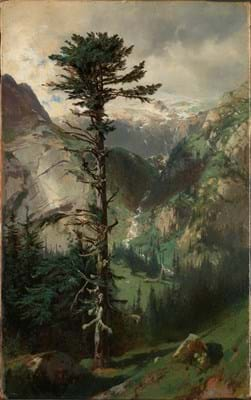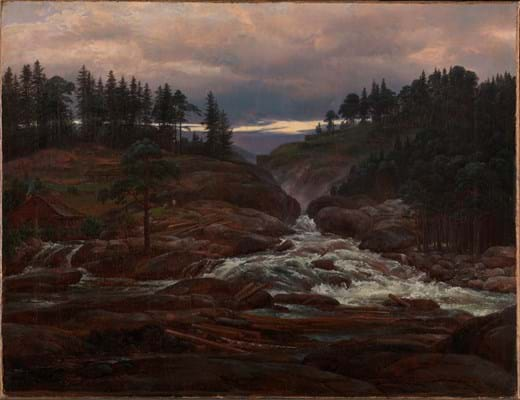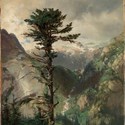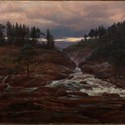The works are At Handeck by the prominent Swiss painter Alexandre Calame (1810-1864) and The Lower Falls of the Labrofoss by Johan Christian Dahl (1788-1857), the leading Norwegian artist of his day. The two painters are not widely represented in UK public collections and these works have been donated to the London gallery through the American Friends of the National Gallery.
Lunde is the son of Norwegian émigrés to the US and pursued a successful career as a lawyer in New York. In 1968 he started buying Scandinavian paintings and Swiss landscapes and today few collections can match the depth of Lunde’s holdings when it comes to this area.
Lunde has also given works to the Metropolitan Art Museum, The Francis and Sterling Clarke and The National Gallery of Australia, while 51 works from his collection were the focus of the National Gallery exhibition in 2011 Forests, Rocks, Torrents: Norwegian and Swiss Landscapes.
Calame’s Valley
At Handeck by Alexandre Calame shows a breath-taking view high in the Haslital valley in Switzerland with the river Aare running through the scene. Executed on the spot in the Bernese Alps, it demonstrates many of the artist’s trademark characteristics such as the crispness of outline and flatness of colour in the rocks. The donation adds to the one other painting by Calame owned by the National Gallery, The Lake of Thun (1854), which is a studio work that came with the Henry Vaughan Bequest in 1900.
Dahl Waterfalls
The Lower Falls of the Labrofoss by Johan Christian Dahl depicts a location 80km to west of Oslo which the artist likely visited on sketching expedition in 1826, before completing this work in his Dresden studio the following year. Today, the Labrofoss is the site of a hydroelectric power station. Lunde’s donation means that this is the first work by Dahl to enter the National Gallery’s collection.
European Context
Both works can be seen in Gallery C of the National Gallery alongside other 19th century paintings, including landscapes by Købke, Friedrich and Corot, including the latter’s The Four Times of the Day which was recently acquired.
National Gallery director, Dr Gabriele Finaldi, said: “The paintings given by Mr Lunde enrich an already wide-ranging collection of European 19th-century landscapes with two fine examples in the Romantic tradition. We are very grateful to him.”
Christopher Riopelle, National Gallery curator of post-1800 European paintings, said “These paintings, highlights of the Lunde collection, allow the National Gallery to show our visitors landscape painting across nineteenth-century Europe in greater detail than ever before.”









